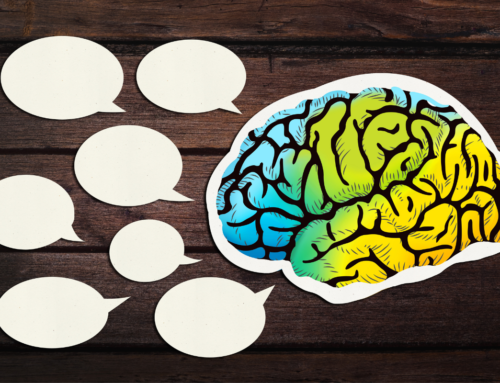You’ve researched your audience, asked the right questions, and learned the particulars of the occasion. You’ve created the opening frame of the talk with an engaging story that hints at the glories to come. You’ve plunged the audience deep into the issue that animates your topic. You’ve bathed the audience in the keen light of your expertise or experience. You’ve painted a wonderful picture of the future for the audience if it adopts your point of view. And finally, you’ve turned your speech over to the audience, giving them a chance to take a step, an active one, that gets them started carrying out your vision of a better world.
What’s left? You may have noticed I haven’t talked about slides yet. That’s because too many people create their talks using slides, assembling them like a deck of cards or a box of Legos. The result is often a few good moments, but a lack of an overall, strong storyline.
I Didn’t Forget the Slides
So now is the time to think about visuals. And I’m going to suggest you think about them in a different way than you may have before. Don’t think of them as an outline – or worse, speaker notes – primarily for your benefit rather than the audience’s. Don’t even think of them as visual aids, designed to make it easier for audience members to assimilate some tricky numbers or relationships.
Rather, think of your visual aids as a way to evoke emotion. You’ve written the lyrics, now write the tune. Just as music quickly creates emotional states in listeners, so can pictures incite emotional responses to your material. Give us pictures of people in the situations you’re talking about. We’ll respond to their faces; we’re human. We can’t help it.
Do your best to banish words – and even numbers – from those slides. If you must use words and numbers, do so as sparingly as possible. Check out Garr Reynolds’ Presentation Zen, or Nancy Duarte’s Slideology to see how it’s done. Those are still the best books I know on creating elegant, powerful slides.
Think Beyond the Slides
But beyond slides, think about demonstrations, music, video, props, co-presenters, and audience interaction. Each of these can be a far more engaging way to move your audience than the all-too-familiar slide deck. How can you change the dynamic of your presentation so that it’s not just you talking for 20 or 45 or 60 minutes?
You can ask an audience to tell their own stories, to brainstorm with you, to play games, to report to the group, to teach each other, to design responses, or to initiate a path forward. You can get them to perform, to testify, to compete, to daydream – don’t be limited by talking and slides.
Mostly, humans have been gathering together since they lived in caves to tell each other stories, establish leaders, and share emotions. That’s why we still need presentations.
And Don’t Forget Delivery
To close out this series on the basic building blocks of a great speech, I do have to state the obvious: public speaking is performance art. All this work on creating a great speech won’t matter much if you don’t give it a great delivery. That’s beyond the scope of this particular series, but something I’ve posted on many times. Suffice it to say that every communication is two conversations, the content and the body language. The two must be aligned for you to be an effective communicator. If they’re not aligned, people will believe the body language. Every time.
So the way to get started thinking about your delivery is to think about what message your body language is sending. Is it primarily about your nervousness? Are you defensively clutching your hands together in front of your stomach? Are you moving all randomly over the stage because your nerves are giving you happy feet? Are you talking non-stop because you’re afraid of even a moment’s silence?
If you’re doing any of those things, your body language is telling the audience that you’re more frightened of what you’re doing than you are interested in connecting with the audience.
So that’s the starting place – thinking about how to connect with your audience to make the speech about them, not you.
Think Beyond the Speech Itself
And last of all, what do you do after the presentation to continue the connection? What follow up opportunities do you offer the audience? Is there something you can send them? Are there ways for the audience to give back to you? Do you solicit feedback? Once the speech is over, the relationship doesn’t necessarily end.
On the contrary, the end of a presentation should be the beginning of a beautiful friendship.











Great insight. In fact, this entire series has been very helpful and will improve all those that embrace your suggestions. Thanks for your inspiration. Nick… you are the Yoda of public speaking!
Thank you I do, Josh!